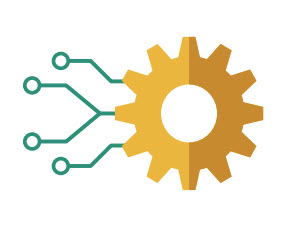Paycheck Protection Program: How To Navigate This Puzzle Of Pandemic Proportions
Sounds simple enough, but the program has created some confusion and has also run into logistical problems.
 In an effort to mitigate the disastrous economic effect of the coronavirus pandemic, the CARES Act was passed. One of its major provisions for small businesses was the Paycheck Protection Program (PPP), a low-interest loan that could be converted into a grant. The problem? This program has both an application deadline (June 30, 2020) and limited funding ($349 billion). This has resulted in businesses rushing to banks like shoppers searching for toilet paper.
In an effort to mitigate the disastrous economic effect of the coronavirus pandemic, the CARES Act was passed. One of its major provisions for small businesses was the Paycheck Protection Program (PPP), a low-interest loan that could be converted into a grant. The problem? This program has both an application deadline (June 30, 2020) and limited funding ($349 billion). This has resulted in businesses rushing to banks like shoppers searching for toilet paper.
This is the basic idea of the PPP: the federal government’s Small Business Administration will provide a loan to eligible small businesses in the amount of two and a half months of the business’s average monthly payroll expenses up to $10 million. The loan can be forgiven if at least 75% of the proceeds are used for payroll costs while the remaining amount can be used to pay rent, utilities and interest on existing debt incurred before February 15, 2020.
There are some limitations. The business must have less than 500 employees and generally has not been involved in any criminal activity. Also, when calculating the loan disbursement amount, if an employee’s annual salary exceeds $100,000 per year, then only the first $100,000 will be added into the eligible loan amount. Finally, the forgiveness amount will be reduced if any employee is laid off.

The Ethical use of Generative AI

Simple enough, but the program has created some confusion and has also run into logistical problems.
First is the issue of payments to independent contractors. Are these payments counted when determining the total payroll expenses? And are those payments using loan proceeds forgivable? Unfortunately, according to guidance from the SBA, the answer to both is no. The reason being that independent contractors can apply for the program themselves.
Second is whether self-employed business owner draws count toward determining the loan amount and whether those draws are forgivable if used with loan proceeds. It appears that way. The SBA guidance states that for sole proprietors, payroll costs include “the sum of payments of any compensation to or income of a sole proprietor or independent contractor that is a wage, commission, income, net earnings from self-employment or similar compensation that is not more than $100,000.” Also, the statute states that “individuals who operate under a sole proprietorship or as an independent contractor and eligible self-employed individuals shall be eligible to receive a covered loan.” And it appears that the PPP covers gig-economy workers which are basically independent contractors with no employees, or in other words, a “true solo.” So the language of the statute and the SBA guidance seems to indicate that owner draws are a covered, forgivable expense.
So if a PPP loan interests you, you should consider the following.
Sponsored

Mitigating M&A Cyber Risk: Pre- & Post-Acquisition Due Diligence

The Ethical use of Generative AI


Attention Buyer: Not All Legal AI Models Are Created Equal

New Report - Are Small Firms Achieving Their Legal Tech Goals?
First, do you really need the loan? If you are not getting new business or additional work, what’s the point of paying additional employees that may end up doing nothing and potentially causing trouble? Some might find that they can receive more money through unemployment. Do you have a plan to pay back the loan in case you are required to pay the funds back?
Next, what paperwork do you need to submit? Lenders’ requirements will vary but most banks accepting applications have requested (or are likely to ask for) the following paperwork:
- Bank statements from Jan 1, 2019, to March 31, 2020. Notate which payments/withdrawals are for payroll.
- Payroll summaries from your payroll provider.
- Pay stubs and canceled checks for payroll payments.
- IRS Form 941s for 2019 and the first quarter of 2020.
- IRS Form 941 account transcripts. You should be able to obtain these online.
- Profit and loss statement for the previous 12 months as of the date of the application.
- 2019 IRS Form W-2s, W-3s, 1099s, and 1096s.
- 2019 or 2018 federal income tax returns.
Since demand is high and funding is currently limited, have this paperwork ready as soon as possible.
Finally, which banks should you apply to? Unfortunately, a lot of banks are accepting and processing applications very slowly due to the volume of applications received. But banks seem to be unwilling to issue PPP loans due to potential liability, and low returns. Also, every major bank is only accepting applications from current clients first. I don’t blame them for doing this. After all, we all know that 99.99999999% of applicants want to take advantage of the loan forgiveness provisions. And banks normally do not want to deal with borrowers who have no intention to pay the loans back. They do not want to deal with the hassle or with angry customers when they learn that their $20,000 payment to their “consultant” mother does not qualify for loan forgiveness.
Sponsored

New Report - Are Small Firms Achieving Their Legal Tech Goals?

How To Maximize Productivity With Westlaw Precision With CoCounsel

You might have better luck with a local bank. Some do not require an existing relationship although they may require you to set up an account with them. However, smaller banks may be similarly overburdened. Also, each bank may have its own requirements and will use different calculations to determine the loan amount. So if you can, you may want to apply to multiple banks and see which banks are easier to work with and give the most realistic calculations. You don’t necessarily want to go with the bank that gives you the highest loan amount if their loan calculations look suspect.
You can go to the SBA website to find a bank nearest you that is accepting PPP applications.
Finally, assuming you receive the PPP loans, how do you ensure that loan proceeds will be forgiven? The best way to do it is to make it easy for the auditors to make the determination. I suggest doing the following.
First, set up a separate bank account dedicated solely for the loan proceeds. Try to find an account that does not charge monthly service fees.
Second, be aware of the 75%/25% rule. 75% of the PPP loan proceeds must be used for payroll costs. And the remaining 25% must be used for eligible nonpayroll costs. This includes mortgage interest payments, rent, utility payments, and interest on debts incurred before February 15, 2020. To be safe, I recommend using at least 80% of the funds for payroll costs.
Third, keep good records. Keep all pay stubs. Document every withdrawal from the dedicated bank account. Keep a copy of your mortgage or lease agreement. Have a copy of all utility bills.
Considering the current ambiguity, don’t expect to get the full amount that you are asking. As stated above, banks will interpret the PPP guidelines differently. Some may be more conservative while others will not. These can result in a smaller loan amount than you expected.
Unfortunately, it looks like the mad rush for the PPP loans will continue for the near future. The good news is that funding is likely to be increased if the initial $349 billion allocation is in danger of being depleted quickly. While lawmakers ponder how much additional funding to give, they can also clear up some of the ambiguities and deficiencies of the PPP legislation. But since no decision has been made yet, getting answers is like asking the grocery store worker when the next shipment of disinfectant wipes is arriving.
Steven Chung is a tax attorney in Los Angeles, California. He helps people with basic tax planning and resolve tax disputes. He is also sympathetic to people with large student loans. He can be reached via email at [email protected]. Or you can connect with him on Twitter (@stevenchung) and connect with him on LinkedIn.







